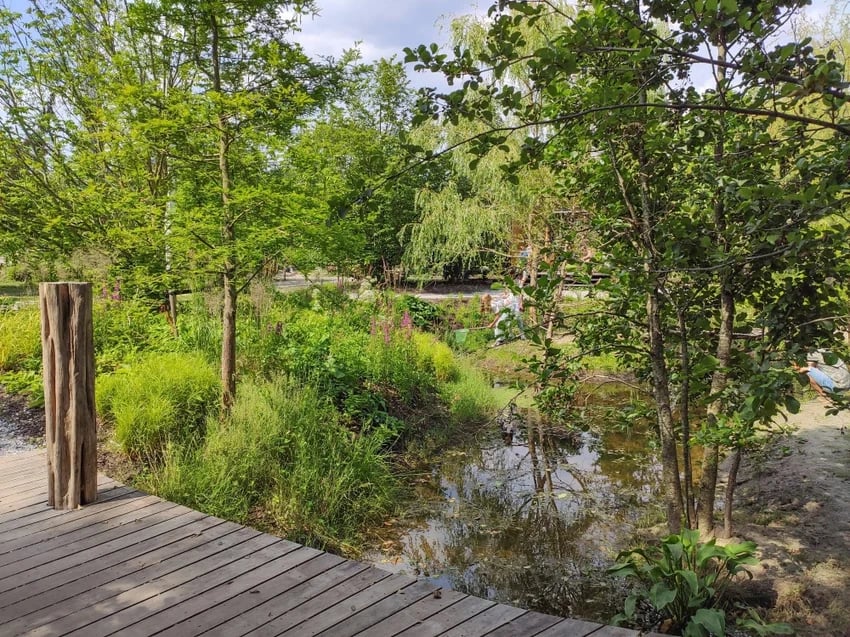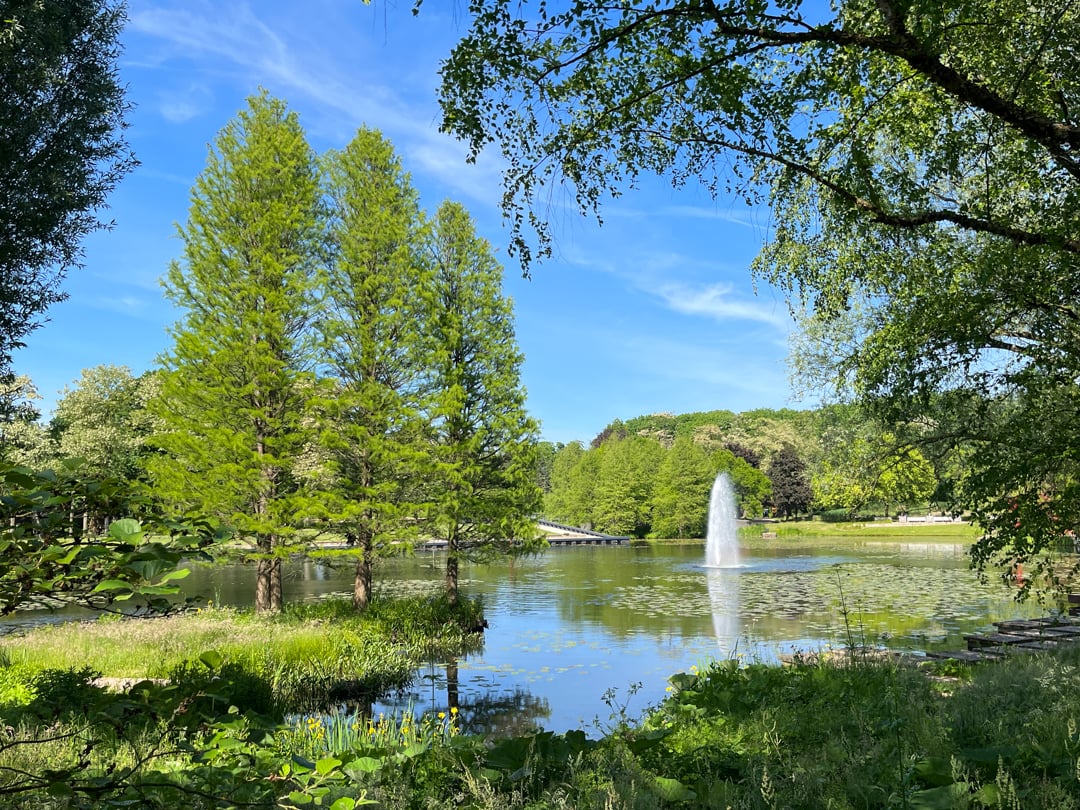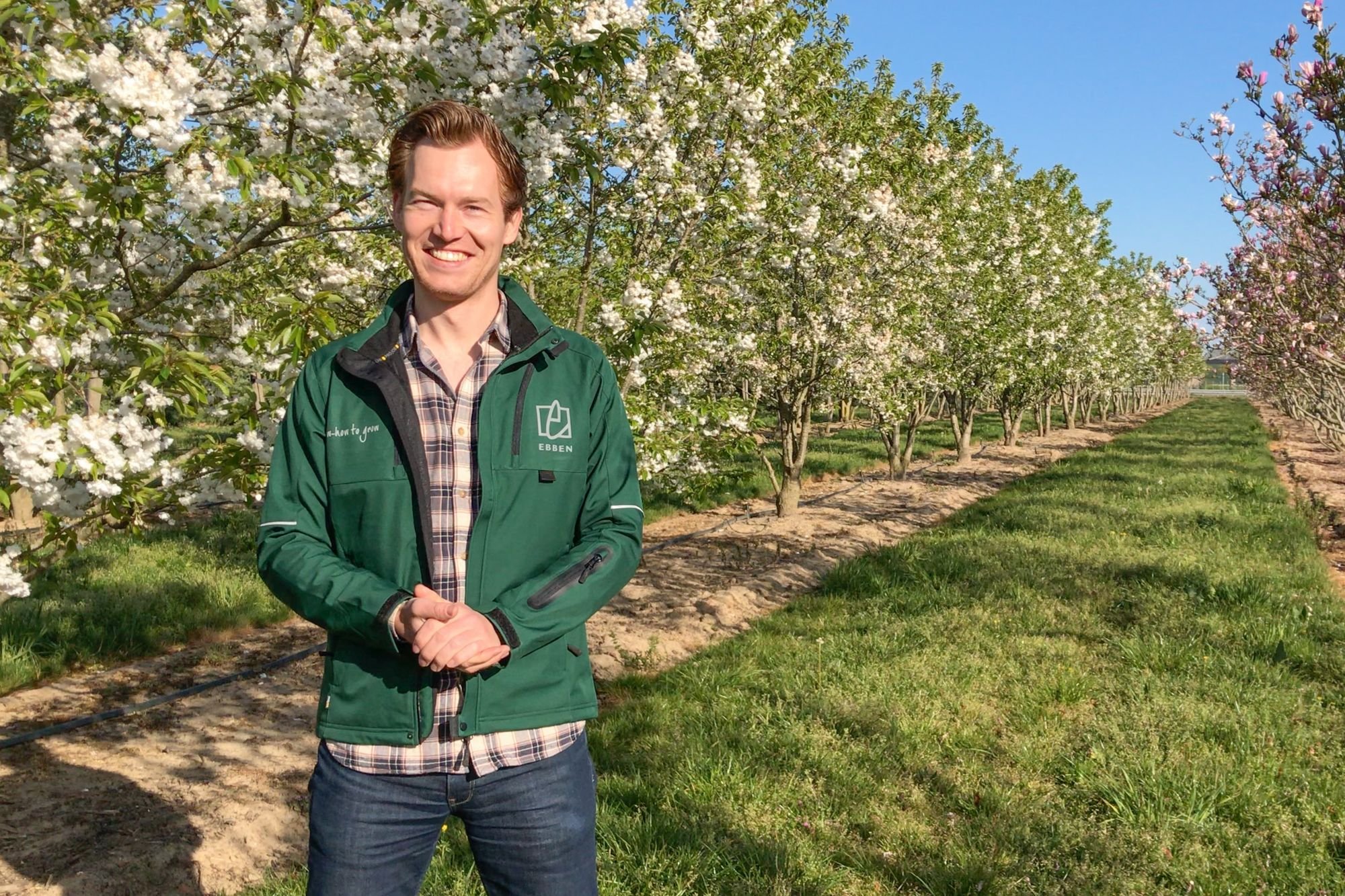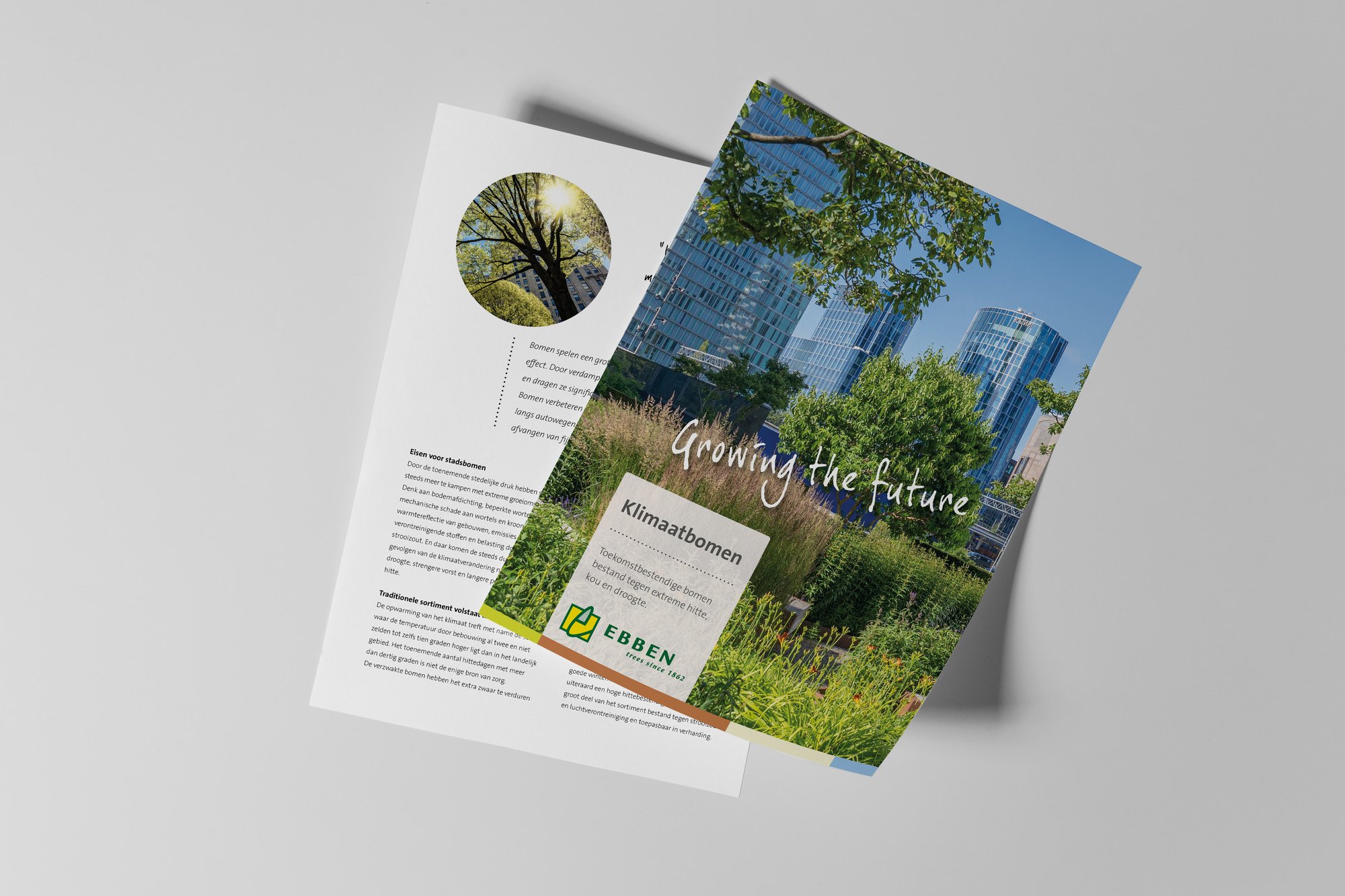Trees as water manager

Trees are beautiful features in the landscape. That’s a fact. But not everyone is aware that they also play an important role in water management and act as natural water buffers. There is a good reason for describing trees as water buffers. Trees, all plants in fact, slow down water drainage thanks to their structure. How this works, we explain in this blog. To do so, we will take a closer look at the properties of trees.
The hydrological cycle in a nutshell
In order to understand why a tree acts as a water store (buffer), it is essential to understand the hydrological cycle. This cycle is the process, whereby water moves from one location to another, above and below the earth’s surface. Water evaporates from the earth's surface thanks to the sun’s warmth, creating clouds. These clouds then produce precipitation which, in turn, falls to the ground in the form of rain, snow or hail. This water is then stored by plants and animals, escapes into rivers, streams and seas, or seeps into the ground to top up aquifers. Water remains present and is never actually lost. If not liquid then in solid (ice) or vapour (mist) form. Trees play a crucial role in this entire cycle in many different ways.
Absorbing and retaining rainwater
One of the ways in which trees act as a water buffer is by absorbing rainwater. When it is raining, water falls on the leaves and branches of trees. Trees can impede rain falling to the ground partly because the greenery absorbs water, partly on account of their structure. Clearly noticeable if you are in the forest and it starts raining after a period of dry weather. You will still remain dry at the start of the rain shower. Only once the trees are saturated or if the wind is blowing hard will the rain fall to the ground and you will get wet. This delaying process helps reduce the impact of rainfall on the ground, stops soil erosion and minimises direct discharge and risk of flooding.
Stemflow
Two other important terms play a role here. ‘Stemflow’ and ‘throughfall. They are hydrological processes in the forest ecosystem and both related to the way in which water reaches the forest floor via the leaf canopy of trees. Both stemflow and throughfall are important for the health of the forest and for regulating the water cycle.
Stemflow is the process, whereby water flows down along the trunk of a tree and ends up at the base of the tree in the soil. Clearly noticeable for example in beeches (Fagus) where water collects between the upstanding roots in natural pools. In the event of a heavy rain shower, rainwater cascades down along the trunk. If the rain falls on the leaves and branches of the tree, some of the water is collected and retained by the leaves and other vegetation. The rest of the water flows down along the branches and the trunk of the tree and is guided to the ground by the bark. This process is important because the water is guided directly to the ground at the base of the tree, which can nourish the health of the tree and can deliver moisture to other plants in the vicinity.
Throughfall
Throughfall is the process, whereby water falls directly to the forest floor thanks to openings in the leaf canopy. Throughfall is important because it helps to provide the soil and the plants growing on the forest floor with water. It also contributes to topping up the groundwater table. This is important to keep water available during drier periods. Both stemflow and throughfall are important for the health of the forest ecosystem and for regulating the water cycle. Water also flows via root openings into the deeper ground layers. This facilitates the water storage capacity of the ground.
Trees in the city
What does this mean for trees in urban areas that are not part of a complete forest ecosystem? A great deal, on balance. The stemflow is not just crucial for the tree itself but also for the underplanting in the area around the tree. This makes it possible to install a bed around the tree as well. In the case of a solitary tree in an urban area, throughfall plays a lesser role but the fact remains that trees absorb moisture and store water in their roots, trunks and leaves. They act as natural sponges and aid cooling of the city. When it rains, regardless of whether this is in the city or forest, the soil around the trees absorbs water and gradually releases it. This reduces the risk of street flooding. Trees also help to improve water quality by absorbing and purifying pollutants and excess nutrients from the soil.
Wadis
We can see the effects of climate change most of all in urban areas. To cope with the downpours more and more wadis are being installed. Wadis are storage reservoirs during periods of excessive rainfall. A key success factor for a properly functioning wadi is the type of planting used. Of course, this is to do with soil type but the role of trees should not be underestimated here either. Trees can penetrate deep into the ground with their roots, thus ensuring natural drainage of water in the soil.
Conclusion
Trees absorb water, store it and return it to the environment via different processes. Thanks to their absorbing function, they play an important role in ensuring water is available and reduce the risk of flooding in the city. They also purify water of harmful substances. The importance of trees as a water buffer cannot be overestimated. In the city, the benefits are not merely ecological but also economic. This makes it of critical importance to plant, preserve and maintain trees. Their functions are key to a healthily functioning city.













